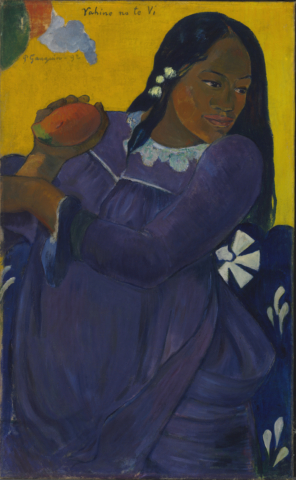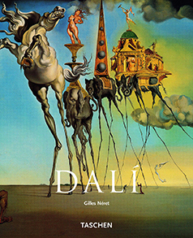Inside The Freud’s
By Baishali Banerjee
In a world of contemporary art, it might be challenging to understand what an artist intends to convey through their work. But the answer to this, surprisingly, may well lie in their untold life stories and past family histories. His artworks are renowned for their psychological exploration of the interaction between the artist and his model, often seen as unsettling. One might wonder about the reason behind his sense of art. Known as one of the foremost 20th-century English portraitists, British painter and draughtsman, specializing in figurative art, the son of architect Ernst L. Freud and the grandson of Sigmund Freud, Lucian Freud was born in Berlin. Find out more about Inside The Freud’s. Here
Surrealism, a cultural movement from Europe where artists created surreal, illogical creations that explored the unconscious mind, had a major impact on Lucian Freud’s early career as a painter. Influenced by his grandfather, Sigmund Freud’s theory of the unconscious, the manifesto defined Surrealism as “psychic automatism”, a process that encouraged a freeing of the mind from rational and utilitarian values and constraints as well as moral and aesthetic judgment.
The founder of the surrealism movement André Breton claimed, that its goal was to “resolve the previously incompatible circumstances of dream and reality into an absolute reality, a super-reality,” otherwise known as surreality.
Although Lucien Freud’s work demonstrated the influence of surrealism at the beginning of his career, by the early 1950s, his realistic tendencies were more apparent in his frequently dark and intriguing works that became his signature.
Over the course of his 60-year career, Freud painted a majority of his friends and loved ones, partly because he was a very secretive and guarded person.
These sitters frequently depicted in interiors and urban settings typically sombre and heavy impasto, (paint is applied thickly to a portion of the surface, typically thick enough to show brush or painting knife). Known for his work in portraiture and nudes, sometimes called a realist, he painted in a highly individual style. Freud was infamous for demanding lengthy and uncomfortable sittings from his models.
So one does wonder as the images are pondered, did his heritage play a part in his works?
The author and British historian Edward Chaney claims
“Freud’s signature, recumbent positioning of so many of his subjects points to the conscious or unconscious influence of the Egyptian mummy and his grandfather’s psychoanalytic couch. His dreaming figures, whether dressed or not, stare into space until (if ever) they are restored to health and/or consciousness. This theory is generally supported by the specific application of this supine stance to freaks, friends, wives, mistresses, dogs, daughters, and mothers (the latter of whom is frequently portrayed after her suicide attempt and ultimately, literally mummy-like in death).”
Considered the father of modern psychology, Sigmund Freud, brought to the world theories and ideas on the connections that exist between the conscious mind, the subconscious mind, the body, and the world around us which he first espoused at the turn of the 20th century.
An Austrian neurologist and the founder of psychoanalysis, he created an entirely new approach to the understanding of the human personality. He is regarded as one of the most influential – and controversial – minds of the 20th century.
In 1885, Freud went to Paris as a student of the neurologist Jean Charcot. On his return to Vienna the following year, Freud set up a private practice, specializing in nervous and brain disorders.
According to Sigmund’s thesis, humans have an unconscious in which sexual and aggressive impulses are in perpetual conflict for supremacy with the defences against themselves. He started conducting a thorough investigation of himself in 1897. When Freud released his seminal work, “The Interpretation of Dreams,” in 1900, he analyzed dreams in terms of unconscious experiences and desires.
After the First World War, He wrote “The Ego and the Id,” which proposed a new structural model of the mind with the id, ego, and superego as its three main components.
In addition to being Jewish, Freud’s fame as the founder of psychoanalysis made him a target. Both Sigmund Freud and his daughter Anna were interrogated by the Gestapo, and many of his books were burned. In 1933, the Nazis publicly burnt a number of Freud’s books. In 1938, shortly after the Nazis annexed Austria, Freud left Vienna on June 4, 1938, arriving two days later in London, England. Many of his family members were left behind and perished in concentration camps.
“The triumphant feeling of liberation,” “is mingled too strongly with mourning, for one had still very much loved the prison from which one has been released.”
-Sigmund Freud
Thanks to Freud’s works’ we understand the impact of the human psyche and from his work onwards the understanding of trauma and how it can literally be passed down by a family member as inherited trauma.
And maybe this helps clarify some of Lucian’s early paintings, most of which are quite small, are frequently compared to Surrealism and German Expressionism because they show people, plants, and animals in peculiar juxtapositions.
However, he sought to downplay these influences. Some of his very early pieces, such as Cedric Morris (1940, National Museum of Wales), hint at the varied flesh tones of his mature style. However, after the war, he developed a thinly painted, extremely precise linear style with muted colours that are best known in his self-portrait Man with Thistle (1946, Tate) and a series of large-eyed portraits of his first wife, Kitty Garman, including Girl with a Kitten (1947, Tate). These are reminiscent of Early Netherlandish paintings and were painted using tiny sable brushes.
Girl with a White Dog, 1951–1952, (Tate) is an example of a transitional work in this process, sharing many characteristics with paintings before and after it, with relatively tight brushwork and a middling size and viewpoint. He would often clean his brush after each stroke when painting flesh so that the colour remained constantly variable. He also started to paint standing up, which continued until old age, when he switched to a high chair. The colours of non-flesh areas in these paintings are typically muted, while the flesh becomes increasingly, highly and variably coloured.
By about 1960, Freud had established the style that he would use, with some changes, for the rest of his career. He was popular for a while in the 1960s, but his work was rediscovered in 1987 after an exhibition in the US. The later portraits often use an over-life-size scale but are of mostly relatively small heads or in half-lengths. Later portraits are often much larger. In his late career, he often followed a portrait by producing an etching of the subject in a different pose, drawing directly onto the plate, with the sitter in his view.
In Freud’s portraits, the subject is frequently the only subject, perhaps stretched naked on the floor or a bed or, conversely, juxtaposed with something else, as in Girl with a White Dog (1951–1952) and Naked Man with Rat (1977–78).
Lucian Freud was deeply influenced by Francis Bacon and admired him greatly. Francis Bacon was represented in some of his most famous works. Both of them exhibited their art at the 1954 Venice Biennale. The 27th Venice Biennale, which took place in 1954, featured works of contemporary art from 31 different countries. Every two years, Venice, Italy hosts the Venice Biennale.
Lucian painted portraits which have been described as being brutally honest; he did not try to make people look good. He often painted them nude, with the faces staring straight ahead. He used thick layers of paint, impasto, using colours of green, grey and purple, which he blended with pink to suggest skin colour.
In 2008 his painting “Benefits Supervisor Sleeping” was sold for US$33.6 million — the most ever paid for a painting by a living artist. This painting was of a nude woman, with rolling flesh asleep on a couch.
He was made a member of the Order of Merit in 1993. He stood amongst key figures in The School of London which include Francis Bacon, Robert Colquhoun, Frank Auerbach, Michael Andrews, Reginald Gray and Robert MacBryde and Freud himself.
Freud moved toward realism in the beginning of 1950s with the painting depicting the alienated and stark style. Legendary Freud was prolific both as an artist and as a womanizer who fathered two daughters in his first marriage, as well as 12 illegitimate children by four mistresses.
On 20th July 2011, Lucian passed away. The private funeral was officiated by Archbishop Rowan Williams. When Lucian Freud died in 2011 he left a residuary estate worth £42 million. Although Freud was claimed to have estimated 14 illegitimate children, however, his will left his estate to one daughter, Rose Pearce, and his solicitor Diana Rawstron.
If you enjoyed reading Inside the Freud’s, why not try reading Uncovering Surrealism.
.Cent London, Be Inspired; Get Involved







